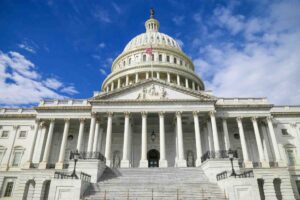Recent Graduation Numbers Should be a Wakeup Call

Today, the U.S. Department of Education revealed the high school graduation rate has risen from 84.1 percent in 2016 to 84.6 in 2017 – the first time the graduation rate has not risen by nearly a full percentage point since 2011. As the figures reveal that progress may be stagnating for the first time in six years, national education leaders are calling today’s revelation a wake up call.
The organizations leading the GradNation campaign working to raise the high school graduation rate to 90 percent (including America’s Promise Alliance, Civic Enterprises, the Everyone Graduates Center at Johns Hopkins University’s School of Education, and the Alliance for Excellent Education) said today’s report should not only serve as a wake-up call for the nation, but should prompt leaders across the nation to act.
“These figures should serve as a major wake-up call to the nation, and should compel leaders in communities big and small to take action,” said John Bridgeland, CEO of Civic Enterprises. “The country is now significantly off pace to reaching the national goal of a 90 percent on-time high school graduation rate by 2020. We have made great progress over the past decade, but we are losing momentum and urgently need to rededicate ourselves to finish the job.”
The national focus on graduation has produced positive results since standardized tracking began in 2011. Today, the graduation rate is nearly 10 percent higher than it was in 2008, which translates into over 3 million more students earning their diplomas – these are 3 million students who would not have graduated if graduation rates had not improved as much as they have since 2008.
“The latest data from the Education Department are a sobering reminder that we cannot afford to be complacent in our efforts to place more young people on the path to high school graduation and post-secondary success,” said Bob Balfanz, Director at the Everyone Graduates Center at Johns Hopkins University. “Given that most jobs today and in the future require post-secondary education or training, a high school diploma is an essential first step to adult success after high school.”
A recent analysis shows there are some 1,300 high schools across America still in need of serious improvement and redesign to raise their graduation rate. In more than 800 of these schools, graduating is a 50-50 proposition for students. And on average, nearly three of every four students in these schools are students of color. For those of us focused on equity and improving youth outcomes, the call to action is clear and specific.
States will soon identify schools that graduate one-third or less of their students for comprehensive supports, as required by federal law under the Every Student Succeeds Act, enacted in 2015. Prior to passage of the law, there were no federal statutory requirements for high schools with these types of outcomes.
Further research shows that states cannot exclusively focus on the lowest performing schools. Our analysis shows that schools with a relatively high graduation rate can still produce large numbers of non-graduates. This is the new silent epidemic. We should not allow a school’s overall graduation rate to mask deeper problems.
“We must also take a deeper look at who is not graduating and whether states are holding themselves accountable for equitable progress across student subgroups,” said John Gomperts, CEO and President of America’s Promise Alliance. “The new federal data shows graduation rate improvement among students of color, students with disabilities, and low-income students – and this is to be celebrated – but these young people are still too far behind their peers.”
The 2017 data is humbling in that the national figure is stagnating and yet we are seeing one to two percentage point increases for black and hispanic students, and low-income students. This tells us that the efforts of educators and communities to meet young people’s needs are working and they deserve our full support. Alarmingly, the graduation rate for English learners declined by 0.5 percent. Taken together with new accountability systems, we must remain vigilant. By one analysis, 12 states do not include all student subgroups in their accountability systems in the way they identify and support schools and another 15 are at risk of obscuring subgroup performance. Historic and systemic inequities continue to disproportionately affect these student populations and it will take greater resources, support, and connection to opportunities to improve outcomes.
Achieving the 5.4 points to reach a 90 percent graduation rate will be challenging, but it is possible. We know what works and we know that schools alone cannot be responsible to fill every single academic and non-academic need that young people have.
The GradNation Action Platform, an evidence-based framework based on the collective experience and expertise of practitioners in the field as well as young people, highlights six areas for schools and communities to focus on in order to raise high school graduation rates. Any community that knows the needs of its youth and acts in two or more of these action areas is likely to see improvements in outcomes.
Though the new data on graduation rates is sobering, we must remember that the challenge ahead is not insurmountable. The strength of the GradNation campaign has always been in its communities and partner organizations coming together to drive progress. It will take a deliberate effort over time from every one of us to understand why progress may be stagnating, who the young people most in need of support are, and how to ensure the system equips them with the tools to thrive. Our past successes serve as proof positive that sustained and collaborative effort can usher more young people towards this important milestone.
As we face this challenge head on, remember that the difference between 84.6 and 90 percent is not just a statistic, but approximately 200,000 young people who will be left behind. That is a disaster for them, their families and communities, and the nation. We cannot let that happen.










